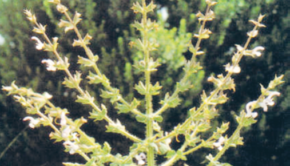Rabbi Kalonymus Kalman Shapiro and Organic Torah
Rabbi Kalonymus Kalman Shapiro, “The Piaseczner Rebbe” (1889 – 1943) is also known as the Rebbe of the Warsaw Ghetto because he remained in the ghetto and continued to offer his leadership during the excruciating years of the war. He was from a renowned rabbinic family and was known for his progressive educational ideas and his profound psychological and spiritual insights. I have been deeply moved by his writings contained in his book Aish Kodesh, which were written under unbelievably horrific conditions during his years in the Warsaw Ghetto. I especially recommend the translations and commentaries of Rabbi Nehemia Polen (my colleague at Hebrew College) in his book The Holy Fire.
Another of Shapiro’s books, Derekh HaMelekh, (The Royal Road) consists of commentaries on the weekly torah readings written between the world wars. I have recently started learning Derekh HaMelekh and I have been struck by how much his writings are models of the kind of organic thinking that I am trying to underscore in this project called Organic Torah. Here is an example:
From his commentary in Derekh HaMelekh on Parshat Shemot (my translation).
. . . Sefer and mitzvot: The mitzvot reveal only the “limbs”, while the sefer (book) reveals the essence, the whole human figure, of which the mitzvot are only the limbs. . . . .
Therefore, when one looks into a book or hears words of torah, if one only sees or hears one or two things, and especially if someone only wants to hear a nice idea or “droosh” – one only hears the “limbs” and misses the teacher’s wholeness, and doesn’t encounter the prophecy‡ within the words.
Therefore, this person only knows what he heard – because he didn’t encounter the whole teacher, the conduit of prophecy, and he’ll remain in all his actions in the same state of doubt and ignorance as before he heard anything.
Therefore, when you study, take only one or two books, according to the time you can allot to them, and study them deeply. And when you hear torah from a teacher, return often and learn a lot from her. Because it is in the combining of all the limbs that the essence or the person’s wholeness is revealed and it is through that wholeness that God reveals prophecies. And then a person knows not only the words that one heard, but will also come to reveal from within oneself new thoughts and paths and understandings.
‡ earlier in this commentary he explained how, even though we no longer have the aspect of prophecy which has to do with revealing future events, changing nature, and the like, we do still have the aspect of prophecy which is inspiration from God which guides us and helps us to become closer to God. This prophecy doesn’t come “down to earth” by itself, but comes through the conduit of a some teacher, through that person’s wholeness or particular psycho/spiritual structure, shiur komah, which is revealed in her speech or in her writing.
I was excited to learn this torah of the Piaseczner, which seems to me to deal with some of the very principles of organic systems that I have been thinking about so much lately. I hear him saying that there is something, a “whole greater than the sum of its parts” which emerges from a book, or a person, which takes us beyond the simple understanding of the words. This is what I have been translating here as “human shape” or “structure” or “wholeness” – the shiur komah – which is revealed when one meets the essence behind and within the words. And, he concludes here, when one takes in that essence, one can then reveal from within oneself new insights. It is not simply learning external facts, but something about the learning opens one up to inspiration and one becomes not only a receiver of the torah, but a creative producer of torah as well.
In another part of this torah he writes about how this kind of insight can come upon a person suddenly:
. . . sometimes, when a person has been studying a book deeply suddenly she is amazed by something and it almost knocks her over, and this thing can pierce her heart and continue to effect her for years until she is changed into a completely new person, sanctifying her and raising her up.
The process of real learning isn’t a linear collection of facts, but involves unexpected jumps when one “gets” that something beyond the words, when it all comes together. The person learning is as much a part of the process as the teacher or the book one is learning from.
The kind of learning that Rabbi Shapiro describes involves the whole person, and it truly connects heaven and earth in that there is a sense of holiness and inspiration that comes when one makes that quantum leap from the words on the page to the essence of what is being revealed. He is clear that that essence is an expression of the wholeness and personality of the teacher but is also beyond the teacher. The revelation is from God through the teacher. It then enters the student who becomes “enthused” (filled with God) and she becomes a creative source of torah as well.
These qualities are the very ones that make the natural world organic. Emergence – “the whole is greater than the sum of the parts,” is a part of every eco-system, small farm or community. And when we see the fences and fields, orchards and gardens of a small farm creating a balance and a dynamic pattern we sense something mysteriously added that we label unique beauty or natural charm of a place. And part of that beauty is that the patterns formed are not uniform and predictable. The curve of a river, the bark of a tree, the feel of a community, emerge from a freedom and unpredictability which is essential to nature, but it is a freedom and unpredictability that nevertheless forms a pattern.
What we see in Rabbi Shapiro’s description of learning torah is thus one level of the natural dynamics of the world emerging, a world in which the Divine can break though into our consciousness, be it though learning a torah text or composting in our garden, suddenly, without warning, giving an intimation of the wholeness that is both beyond and within this place, time or person.





Pingback: Rabbi Kalonymus Kalman Shapiro and Organic Torah (via Organic Torah) « Talis In Wonderland